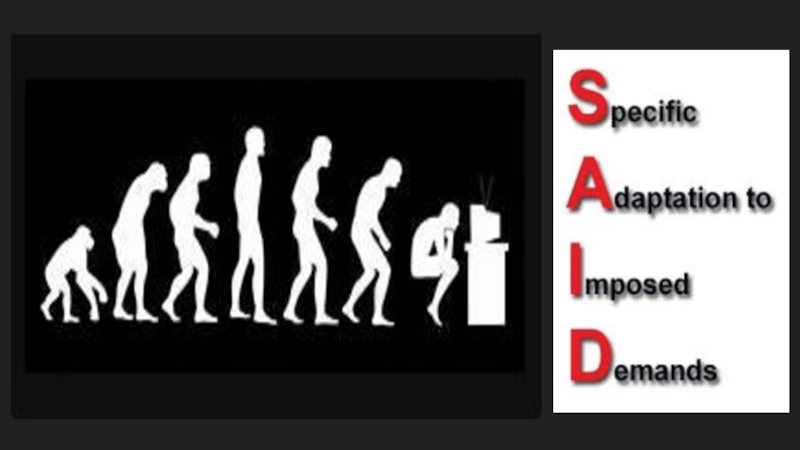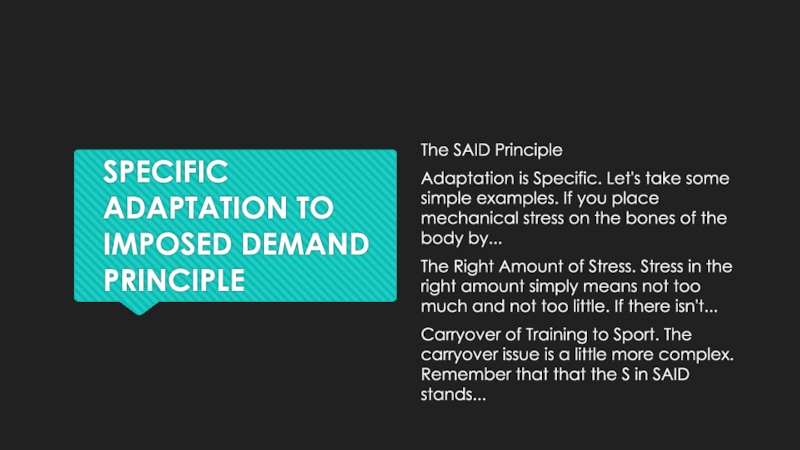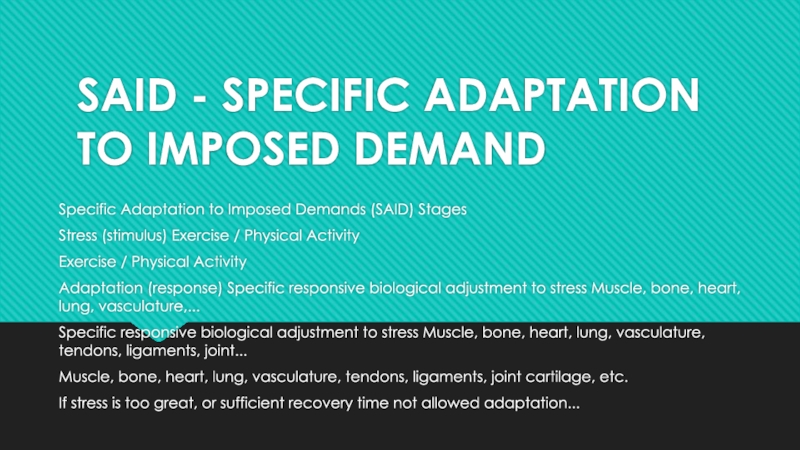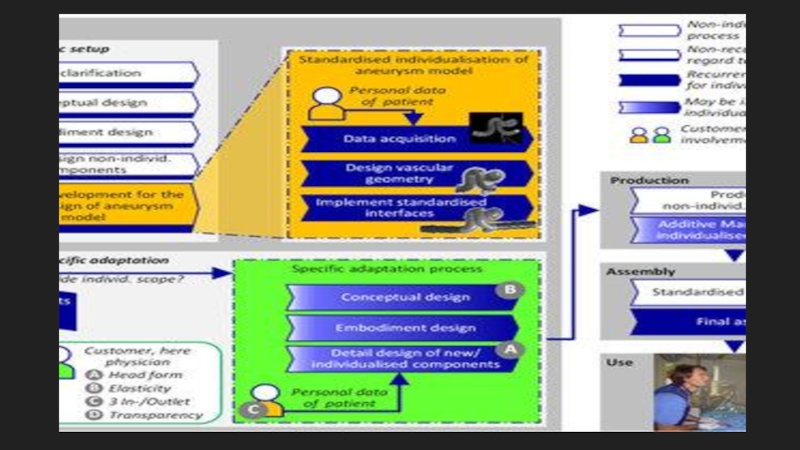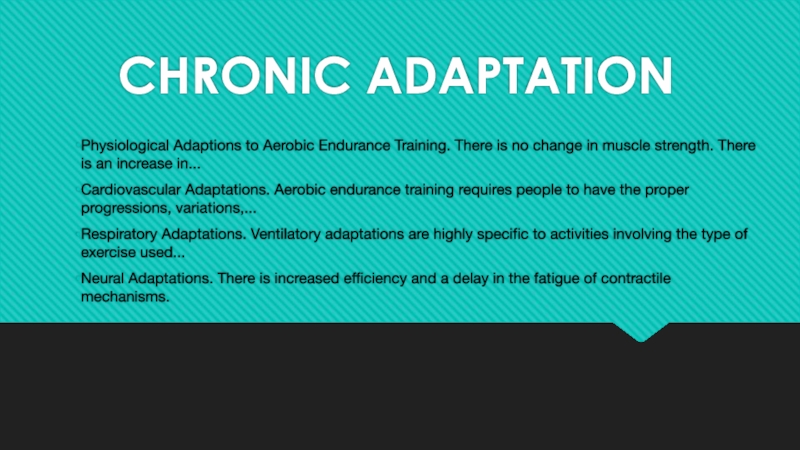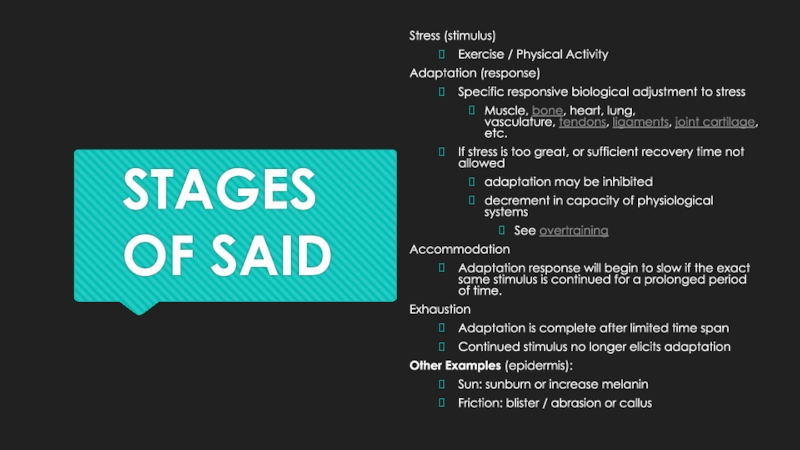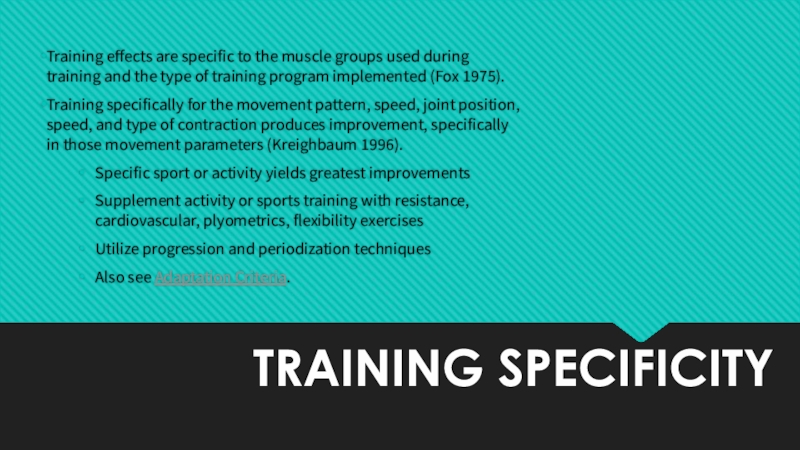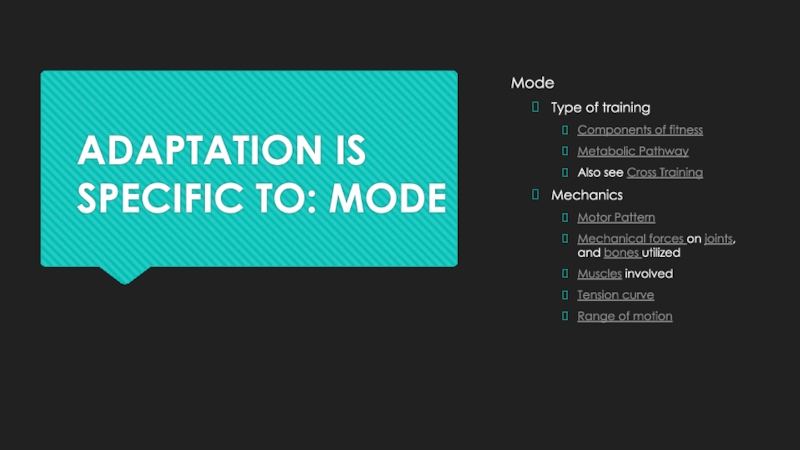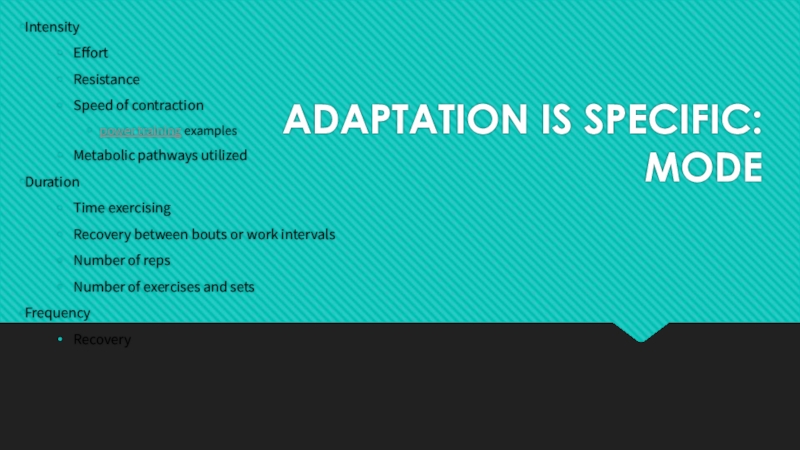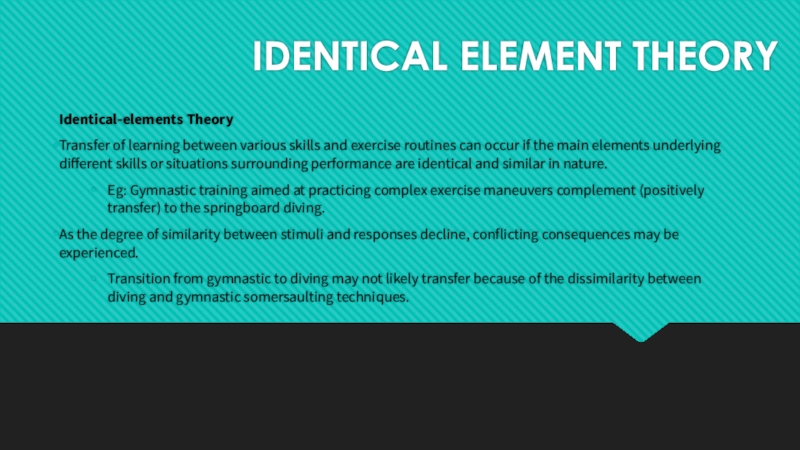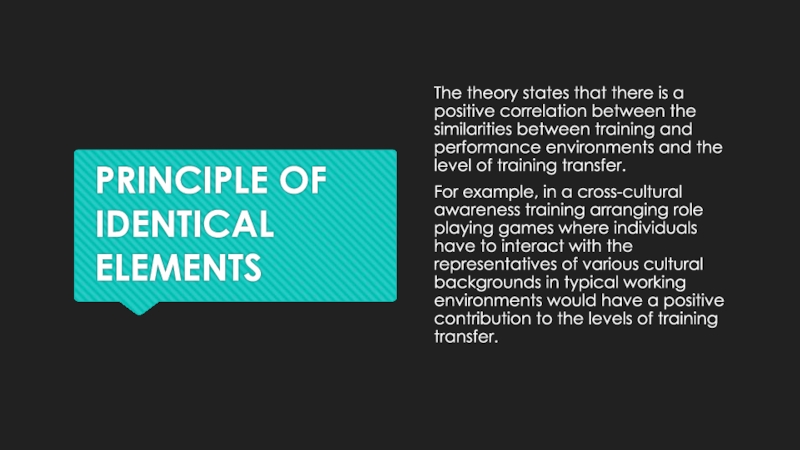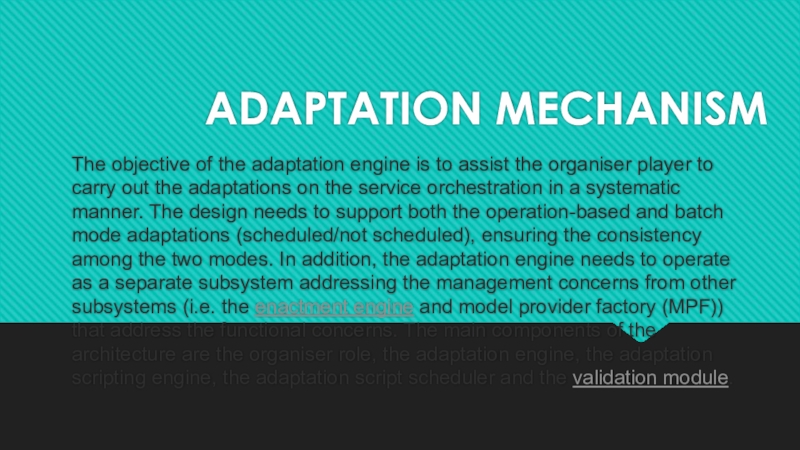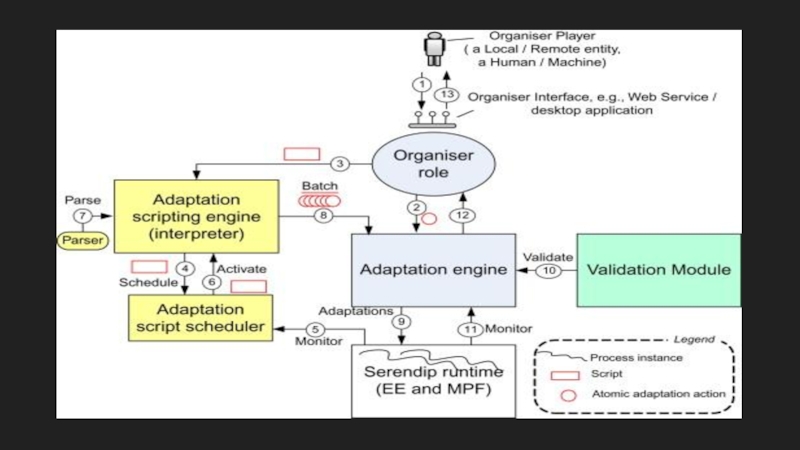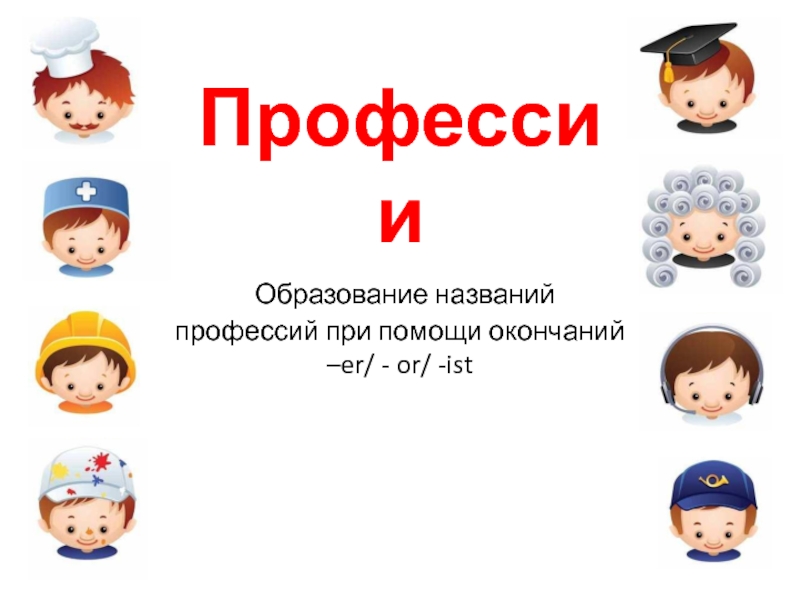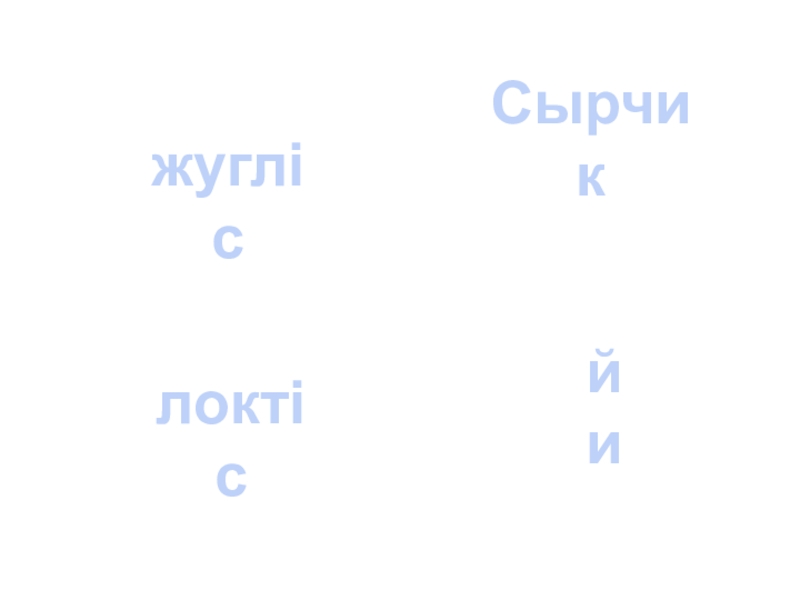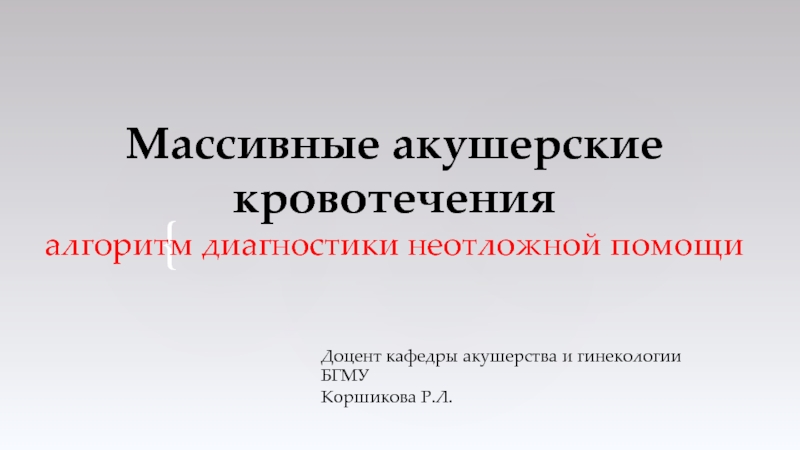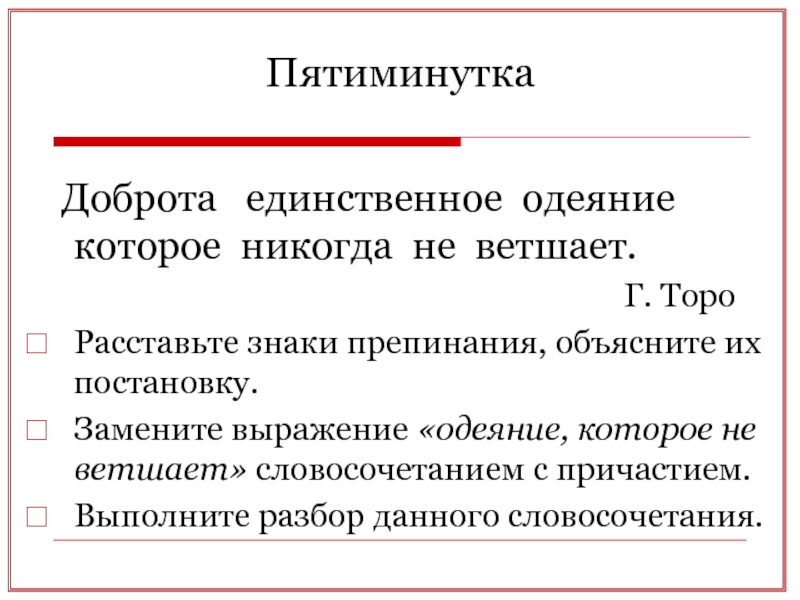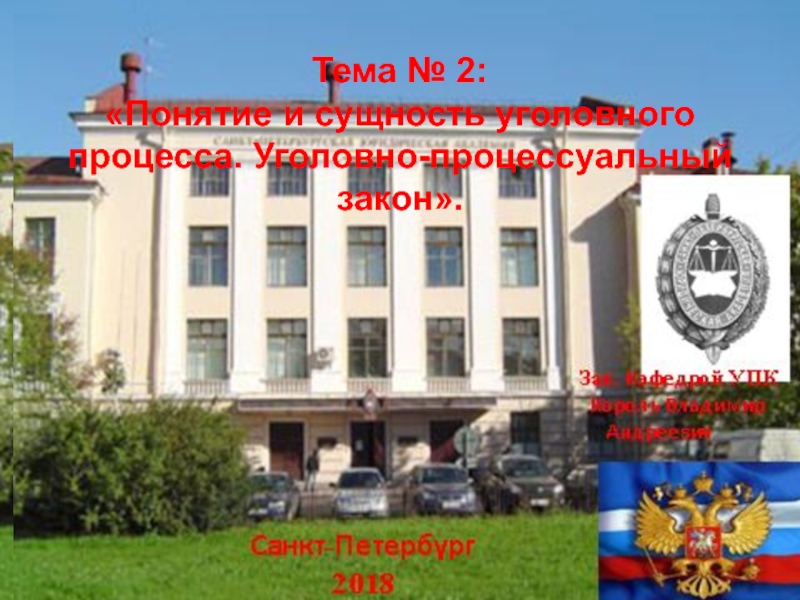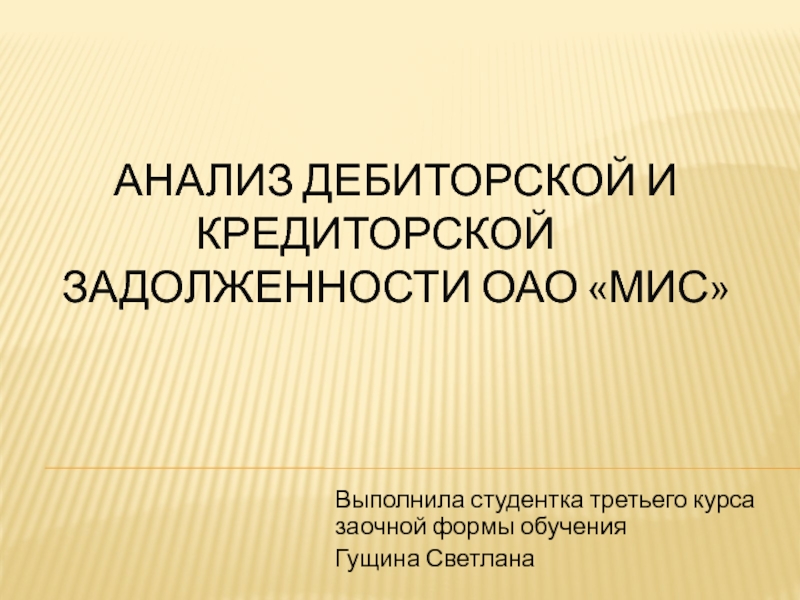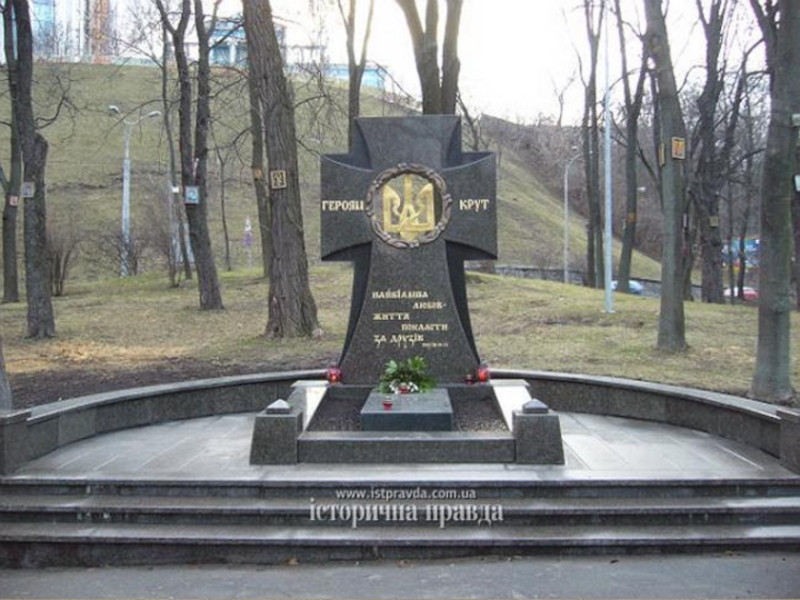Разделы презентаций
- Разное
- Английский язык
- Астрономия
- Алгебра
- Биология
- География
- Геометрия
- Детские презентации
- Информатика
- История
- Литература
- Математика
- Медицина
- Менеджмент
- Музыка
- МХК
- Немецкий язык
- ОБЖ
- Обществознание
- Окружающий мир
- Педагогика
- Русский язык
- Технология
- Физика
- Философия
- Химия
- Шаблоны, картинки для презентаций
- Экология
- Экономика
- Юриспруденция
SPECIFIC ADAPTATION AND ITS MECHANISM
Содержание
- 1. SPECIFIC ADAPTATION AND ITS MECHANISM
- 2. ADAPTATION IN BIOLOGY Adaptation, in biology, the process
- 3. SPECIFIC ADAPTATIONSpecific Adaptation Recognizes a stressor Hormones
- 4. SPECIFIC ADAPTATION TO IMPOSED DEMANDS [SAID]The SAID
- 5. Слайд 5
- 6. SPECIFIC ADAPTATION TO IMPOSED DEMAND PRINCIPLEThe SAID
- 7. SAID - SPECIFIC ADAPTATION TO IMPOSED DEMANDSpecific
- 8. Слайд 8
- 9. CHRONIC ADAPTATIONPhysiological Adaptions to Aerobic Endurance Training. There is no
- 10. STAGES OF SAIDStress (stimulus)Exercise / Physical ActivityAdaptation
- 11. TRAINING SPECIFICITYTraining effects are specific to the
- 12. ADAPTATION IS SPECIFIC TO: MODE ModeType of
- 13. ADAPTATION IS SPECIFIC: MODE IntensityEffortResistanceSpeed of contractionpower
- 14. IDENTICAL ELEMENT THEORYIdentical-elements TheoryTransfer of learning between
- 15. PRINCIPLE OF IDENTICAL ELEMENTSThe theory states that
- 16. ADAPTATION MECHANISMThe objective of the adaptation engine
- 17. Слайд 17
- 18. Слайд 18
- 19. Скачать презентанцию
ADAPTATION IN BIOLOGY Adaptation, in biology, the process by which a species becomes fitted to its environment; it is the result of natural selection’s acting upon heritable variation over several generations. Organisms are adapted to their environments in a great
Слайды и текст этой презентации
Слайд 2ADAPTATION IN BIOLOGY
Adaptation, in biology, the process by which a species becomes
fitted to its environment; it is the result of natural selection’s acting
upon heritable variation over several generations. Organisms are adapted to their environments in a great variety of ways: in their structure, physiology, and genetics, in their locomotion or dispersal, in their means of defense and attack, in their reproduction and development, and in other respects.Adaptation is a trait with current functional role in the life of an organism that is maintened and evolved by means of natural selection.
Слайд 3 SPECIFIC ADAPTATION
Specific Adaptation Recognizes a stressor Hormones are released Mobilizes
energies to deal with the stressor Structures may be destroyed
while dealing with the stressor (myosin heads during a muscular contraction) Magnitude and duration of the stressor.Слайд 4SPECIFIC ADAPTATION TO IMPOSED DEMANDS [SAID]
The SAID principle is one
of the most commonly referred to principles when creating training
programs. SAID stands for Specific Adaptations to Imposed Demands and basically means that the changes, or adaptations, your body makes in response to training are specific to the stress, or stimulus, to which it is exposed.In other words, the neural, structural and functional changes your body makes are directly related to the type of activity you partake in.
Слайд 6SPECIFIC ADAPTATION TO IMPOSED DEMAND PRINCIPLE
The SAID Principle
Adaptation is Specific.
Let's take some simple examples. If you place mechanical stress
on the bones of the body by...The Right Amount of Stress. Stress in the right amount simply means not too much and not too little. If there isn't...
Carryover of Training to Sport. The carryover issue is a little more complex. Remember that that the S in SAID stands...
Слайд 7SAID - SPECIFIC ADAPTATION TO IMPOSED DEMAND
Specific Adaptation to Imposed
Demands (SAID) Stages
Stress (stimulus) Exercise / Physical Activity
Exercise / Physical
ActivityAdaptation (response) Specific responsive biological adjustment to stress Muscle, bone, heart, lung, vasculature,...
Specific responsive biological adjustment to stress Muscle, bone, heart, lung, vasculature, tendons, ligaments, joint...
Muscle, bone, heart, lung, vasculature, tendons, ligaments, joint cartilage, etc.
If stress is too great, or sufficient recovery time not allowed adaptation...
Слайд 9CHRONIC ADAPTATION
Physiological Adaptions to Aerobic Endurance Training. There is no change in muscle
strength. There is an increase in...
Cardiovascular Adaptations. Aerobic endurance training requires people to have
the proper progressions, variations,...Respiratory Adaptations. Ventilatory adaptations are highly specific to activities involving the type of exercise used...
Neural Adaptations. There is increased efficiency and a delay in the fatigue of contractile mechanisms.
Слайд 10STAGES OF SAID
Stress (stimulus)
Exercise / Physical Activity
Adaptation (response)
Specific responsive biological
adjustment to stress
Muscle, bone, heart, lung, vasculature, tendons, ligaments, joint cartilage, etc.
If stress is
too great, or sufficient recovery time not allowedadaptation may be inhibited
decrement in capacity of physiological systems
See overtraining
Accommodation
Adaptation response will begin to slow if the exact same stimulus is continued for a prolonged period of time.
Exhaustion
Adaptation is complete after limited time span
Continued stimulus no longer elicits adaptation
Other Examples (epidermis):
Sun: sunburn or increase melanin
Friction: blister / abrasion or callus
Слайд 11TRAINING SPECIFICITY
Training effects are specific to the muscle groups used
during training and the type of training program implemented (Fox
1975).Training specifically for the movement pattern, speed, joint position, speed, and type of contraction produces improvement, specifically in those movement parameters (Kreighbaum 1996).
Specific sport or activity yields greatest improvements
Supplement activity or sports training with resistance, cardiovascular, plyometrics, flexibility exercises
Utilize progression and periodization techniques
Also see Adaptation Criteria.
Слайд 12ADAPTATION IS SPECIFIC TO: MODE
Mode
Type of training
Components of fitness
Metabolic
Pathway
Also see Cross Training
Mechanics
Motor Pattern
Mechanical forces on joints, and bones utilized
Muscles involved
Tension curve
Range of motion
Слайд 13ADAPTATION IS SPECIFIC: MODE
Intensity
Effort
Resistance
Speed of contraction
power training examples
Metabolic pathways utilized
Duration
Time
exercising
Recovery between bouts or work intervals
Number of reps
Number of exercises
and setsFrequency
Recovery
Слайд 14IDENTICAL ELEMENT THEORY
Identical-elements Theory
Transfer of learning between various skills and
exercise routines can occur if the main elements underlying different
skills or situations surrounding performance are identical and similar in nature.Eg: Gymnastic training aimed at practicing complex exercise maneuvers complement (positively transfer) to the springboard diving.
As the degree of similarity between stimuli and responses decline, conflicting consequences may be experienced.
Transition from gymnastic to diving may not likely transfer because of the dissimilarity between diving and gymnastic somersaulting techniques.
Слайд 15PRINCIPLE OF IDENTICAL ELEMENTS
The theory states that there is a
positive correlation between the similarities between training and performance environments
and the level of training transfer.For example, in a cross-cultural awareness training arranging role playing games where individuals have to interact with the representatives of various cultural backgrounds in typical working environments would have a positive contribution to the levels of training transfer.
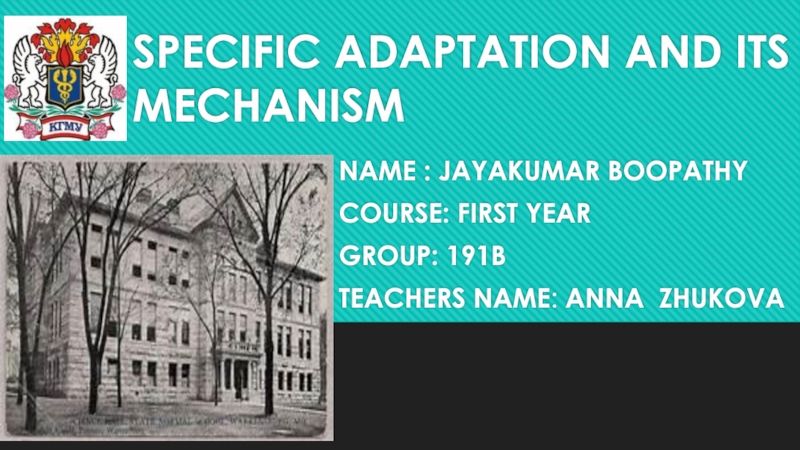
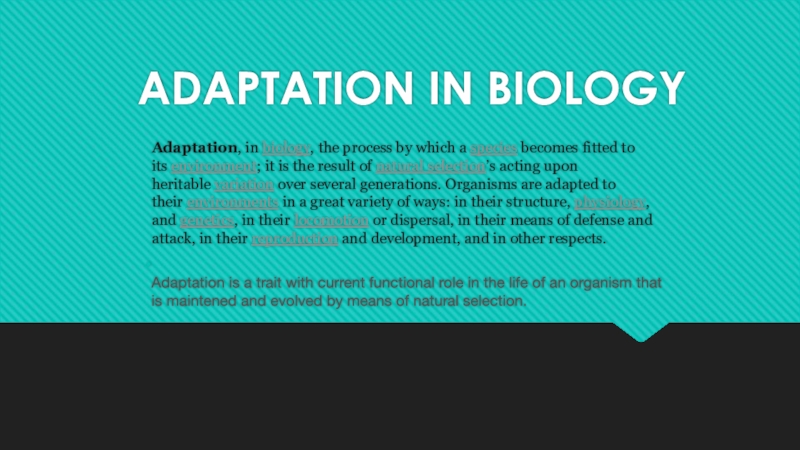
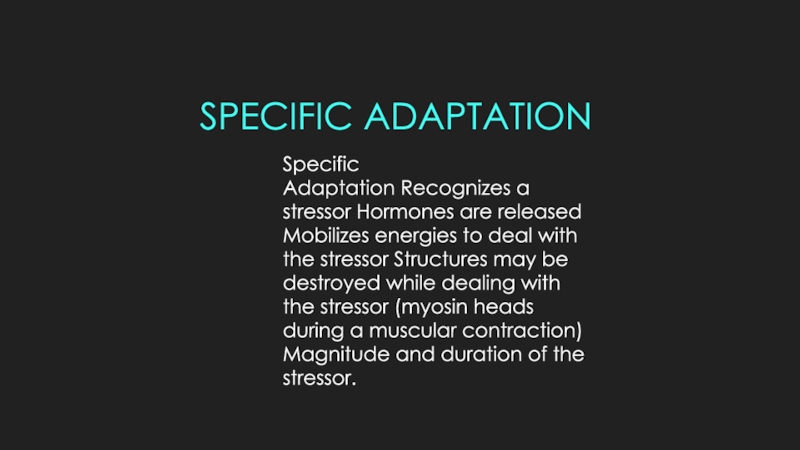
![SPECIFIC ADAPTATION AND ITS MECHANISM SPECIFIC ADAPTATION TO IMPOSED DEMANDS [SAID]The SAID principle is one of SPECIFIC ADAPTATION TO IMPOSED DEMANDS [SAID]The SAID principle is one of the most commonly referred to principles](/img/tmb/6/574367/ecd61a848725f3380a83fbc94311667f-800x.jpg)
